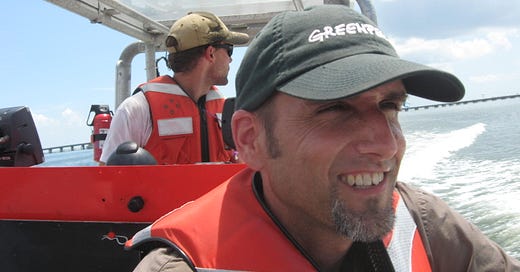Repressing Environmental Protest Just got Easier.
How a North Dakota Jury verdict threatens our First Amendment Rights
In 1973 the American Indian Movement set fire to a courthouse in Custer South Dakota protesting the killing of an Indigenous man and outraged that charges of manslaughter rather than murder were brought against the white man who’d stabbed him to death (after at least one witness heard the attacker say he was going to “kill him an Indian.”)
If they’d rioted in North Dakota a jury might have convicted the Sierra Club.
OK, sound absurd? If you remember the Standing Rock protest encampment against the Dakota Access Pipeline that lasted from 2016 into 2017 including a harsh winter of repression, you might also remember how visibly and powerfully it was led by its Indigenous ‘Water Protectors.’
These largely non-violent protests – in the face of hostile local law enforcement and corporate hired goons, i.e. “private security” - were led by the Standing Rock Sioux who saw their lands and treaty rights being put at risk by the pipeline’s access to their lands that they had never given their approval to.
The protests drew thousands of Native Americans, inspired indigenous youth and other supporters (including Bobby Kennedy Jr. before the worm turned) and also set off a revival of indigenous empowerment in the U.S., greater than the 1970s AIM era, that has carried through the COVID Epidemic - when many reservations closed access to outsiders as a protective measure - and on to today. We’re now in the midst of a revival of Indigenous art, films, culture, TV shows, reclamation and co-management of lands and waters and emerging political leadership including, under the Biden administration, the first Indigenous Secretary of Interior and first Alaska Native elected to Congress.
And yet, on Wednesday March 19, ignoring the Indigenous leadership at Standing Rock, a North Dakota jury of 9 decided Greenpeace should pay over $660 million for damages and defamation to Energy Transfer, the Texas based pipeline company that completed their crude oil pipeline in 2017 and whose CEO (stand by, you’ll never guess) is a major supporter of and donor to Donald Trump. They claim it was Greenpeace that caused all the problems, another case of 'outside agitators.'
First, I have a problem with the concept that in the midst of a global climate emergency and 40-years of industry disinformation you can actually defame the fossil fuel industry. It’s like Vladimir Putin suing Alexei Navalny’s family for defaming him by saying Navalny was murdered in prison.
Greenpeace, being an environmental and climate action group doesn’t have hundreds of millions in spare cash to pay out, after all, they’re GP not BP. But the aim of this successful, for now, legal action or SLAPP suit (Strategic Lawsuit Against Public Participation) almost certainly has less to do with enriching the largest pipeline company in the United States that generated over $82 billion in revenue last year, and more to do with repressing voices of dissent.
They must feel like they’re on a Ketamine high now that they've helped elect the “Drill Baby Drill” president and his quisling congress of climate deniers.
“They want our silence, not our money,” says Sushma Raman, interim director of Greenpeace. Greenpeace’s lawyers plan to appeal. Unfortunately, they’ll be appealing to the North Dakota Supreme Court which earlier rejected their appeal for a change of venue despite North Dakota’s largest industry being oil drilling and gas extraction and over 63 percent of its voters (in this 84% white state) having voted for Donald Trump last year with his commitment to (oil and gas) “Energy Dominance” and insistence that “Climate Change is a Hoax.”
In the U.S. Greenpeace is still perceived as a radical organization, although globally it’s looked at as a valued resource by governments and companies, often providing scientific advisors to government delegations at UN climate summits, ocean conferences and elsewhere. The perception of Greenpeace as radical (even as it promotes common sense solutions like a rapid transition to clean energy) may reflect its banner hangings and other dramatic non-violent attention-getting actions going back to its early ‘Save the Whales’ campaigns of the 1970s when its people in Zodiac rafts would place themselves between the harpoon guns of Russian whalers and the whales being targeted for death.
The organization also has a commitment to equity and fairness which is why Greenpeace early on acknowledged the Indigenous leadership at Standing Rock whose claims to the land and stewardship of its waters and other resources the oil industry would rather ignore.
As for Greenpeace itself, “this is the end of a chapter, but not the end of our fight,” Ramon said. And of course, that fight, especially in a time when the President is suing and threatening to jail media outlets and anyone else who dares to criticize him, is really a fight for our first amendment freedoms that assures us that “Congress shall make no law…abridging the freedom of speech, or of the press: or the right of the people peaceably to assemble, and to petition the Government for a redress of grievances.” Of which there are now many.




